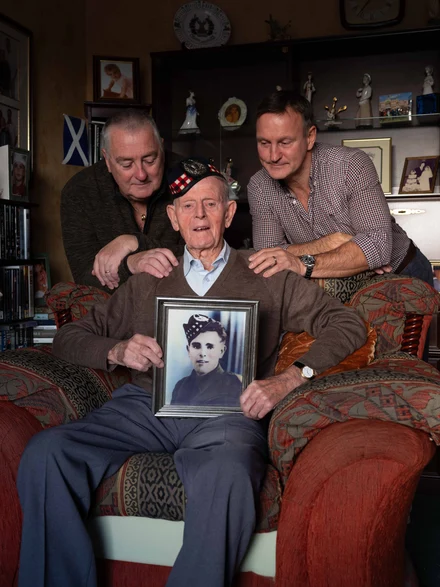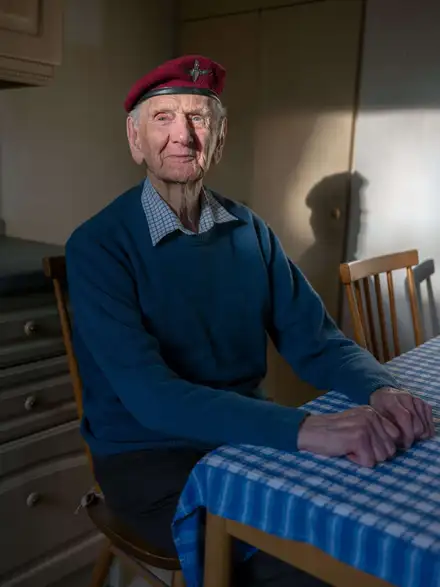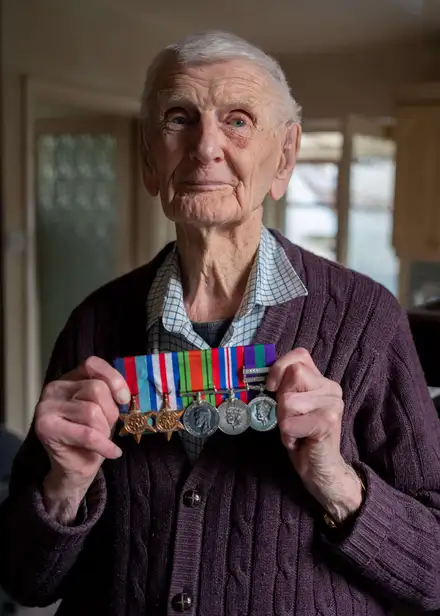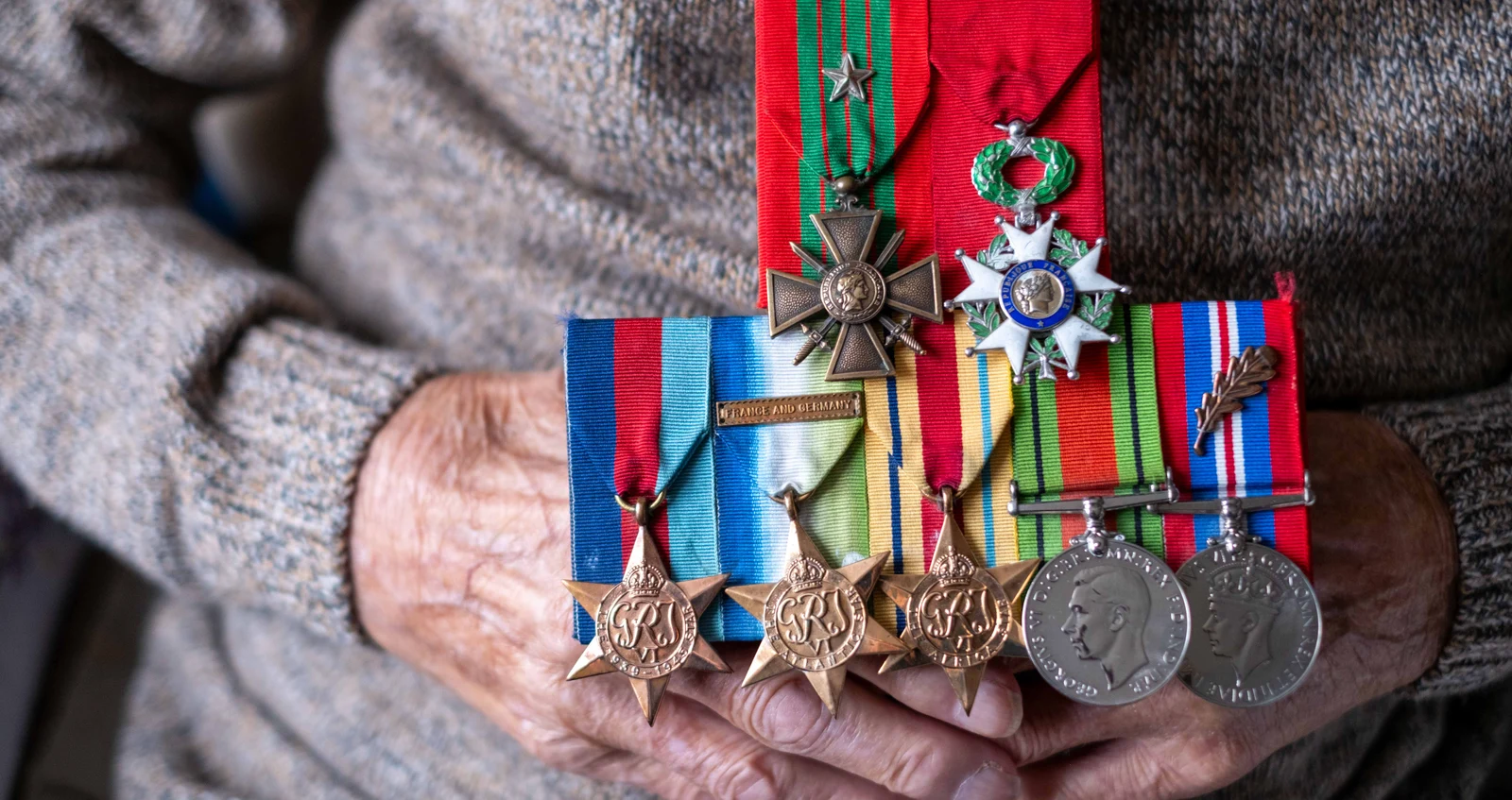


Private Jim Glennie
5th/7th Gordon Highlanders
Jim, from Aberdeenshire, joined the 5th/7th Gordon Highlanders and spent two years preparing for war, coming ashore on D-Day at 19 years of age. Alongside him were his best friends Ronnie McIntosh and Bill Norrie. Over the next ten days they faced hazards including mines and tanks as their unit worked its way inland towards Caen.
“We were always together, even before going into France. I went to school with Ronnie, played bowls with him, and then Norrie came along, and we said ‘come with us’.
When I landed on D-Day, I was lucky, I didn’t even get my feet wet! After that it was all go… I remember that first night, we had a tin of corned beef between the three of us… The second day though, that was a wee bit hot. The Germans were right there waiting for us.
Aye, it was tough going, and then on the 16th [June} we were trying to advance, and that’s when I got shot… It was a machine pistol, it was awfully close because the Germans had advanced, that’s why I was captured. Ronnie was captured too, and that night we got into a barn [as prisoners] and he told me Norrie had been killed… he was a fine chap.”
Jim was sent to a German-controlled hospital before being transferred to the large Stalag IVb Prisoner of War camp in Germany where he spent the rest of the war. On returning home he eventually became a first-class welder in a shipyard until he retired. Jim married Winnie in 1953 and they had two children, and he and Ronnie remained life-long friends.
Marine Robert Casson & Private Joseph Casson



Private Peter Lovett
8th (Irish) Battalion, King’s Liverpool Regiment
In June 1942, still 17, Peter lied about age and joined the 8th Irish Battalion, the King’s Liverpool Regiment. He was in the second wave on Juno Beach on D-Day, attached to the 3rd Canadian Infantry Division. He was in No 7 Beach Group and worked on supervising the beach clearance, directing incoming tanks and vehicles and recovering the bodies of comrades. When his regiment was disbanded in July and he volunteered to join 9th Battalion, the Paratroop Regiment. It was then that he experienced a close shave after an all-night patrol.
“I'd got my mess tin, I was eating my breakfast, which was sausage and egg. And normally you hear mortar bombs in the distance, and it gives you warning… I just heard BANG! and everything went black. I was thrown about eight feet, and I was upside down in a trench. And I heard blokes shouting, “Medics, Medics!” And they grabbed hold of me by the legs, because my legs were sticking out. And they had to drag me out of this trench.
Next thing I knew, I was on the jeep and the first real time I kind of came to, I was in a bloody hospital. I was in a big marquee at Bayeux... I looked around, there were quite a lot of beds. But there were blokes with arms in a sling, blokes with their leg off and everything. And I was very embarrassed, because as far as I knew, I wasn't wounded…
A nurse said: “We think it's concussion. So, I should keep him in overnight, kick him out in the morning if he's alright”. So, that was that.”
After the Normandy campaign, Peter saw extensive action in Europe in the Ardennes, and he later dropped over the Rhine for the first time in March 1945 as part of Operation Varsity.
Corporal Sidney Bates VC
B Company, 1st Battalion, Royal Norfolk Regiment





